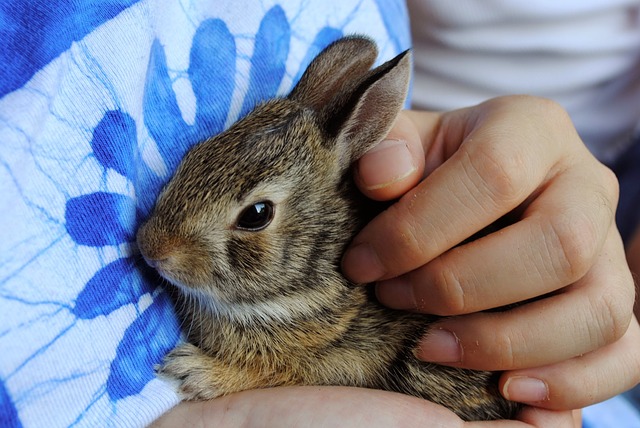In our last post we've talked about some general things on how to safely carry and transport a rabbit and that included how to hold and handle your bunny while on a short trip to the vet, what kind of rabbit carriers are out there and what to look for when deciding to buy one and some general tips on the matter.
In this post, we're going to talk about the more serious side of how to safely carry and transport a rabbit, and that's travelling by car or airplane, which bunnies usually hate. So let's find out what we can do to make sure our bun gets the best care while on the road.
How to Safely Carry and Transport a Rabbit
Rabbits and Cars
As you can probably guess, your bun would be a lot happier staying at home rather than taking a trip downtown by car, or even worse, spending several hours on the road, in the chaos of the traffic. But as life goes on, sometimes you need to move, and we're sure nobody would leave their bun behind. So, let's find out how you can make the trip less stressful and a little bit more enjoyable for your hopping furry friend.
As we've mentioned in our last post, you should get a good, sturdy, spacious and ventilated rabbit carrier before the trip, pad it with some towels or blankets for additional comfort of your bun and get your furry friend used with it. Let him smell it and explore it by themselves at first, then put some treats and toys inside it and gradually increase your bun's time in it by closing the door and carrying him around your home for periods of time from a few minutes to around thirty.
After you have gotten your bun used with the carrier, it's time to go. But before starting, make sure your car is cool and ventilated, as it's not advisable for the temperature inside the car to go above 75 degrees Fahrenheit. Good ventilation during the trip is also an important aspect but the vents shouldn't be blowing directly on the carrier. Also, make sure the carrier isn't in direct sunlight and don't leave your furry friend unattended in the car on a warm day. If the weather is extremely hot, you can even find a method to wrap a damp towel around the carrier.
Once you've made sure the car is cool enough, you can get on the road. If the trip is long, make sure you stop at regular intervals in order not to stress your bun too much. Also, during the stops, you need to provide your rabbit with food, hay and water, depending on the length of the trip.
There are several safe ways in which you can place the carrier in the car. One is in the trunk, if your car is a station wagon, on a seat or on the floor in front of the seat. If you place the carrier on a seat, you need to make sure it's level by placing something like a blanket underneath it to level it and stabilize it. If it's on the seat, you must secure it with the seat belt to avoid falling from the seat in an emergency brake or something similar.
If you decide to place the carrier in front of the seat or in the trunk, make sure the floor is not slippery to avoid the carrier slidding inside the car during sudden motion.
Also important is to wrap the whole carrier in a soft protective cover that allows ventilation and prevents the rabbit from seeing his surroundings and getting scared or agitated.
Rabbits and Flying
While during a car trip with your rabbit, you can stop at regular intervals to feed your rabbit or let him relax a little bit, you can't stop an airplane in mid air if your bun gets nervous, so you really need to make sure there's no other option before getting on a long plane trip with your bunny.
The first thing you need to do is to find a flight company willing to allow your rabbit on board, as most have very strict policies about allowing pets on board. Some allow them, but only in the baggage hold, which is not advisable. Just imagine yourself in a cage in the baggage hold of an airplane for ten hours. It's definitely nothing pretty and an overall very stressful experience.
Some airlines allow animals in the cabin, certain ones limiting the number to only one, so you need to reserve it in advance. Some companies allow other animals in the cabin, but not rabbits, and they accept it only in cargo.
The best way, if possible, is to have your bun with you at all times.
If you manage to get that approved, you need to prepare your bun for the flight, and especially the carrier, which is similar to that of travelling by car. Another thing you need to do is get a health certificate for the rabbit and pay the fare for his air travel. Optional, but maybe helpful, is to take a trip to your vet before and get your bun some sedatives should he be very stressed out.
Once inside the cabin with your bun, you must make sure he'll always be inside the carrier under your seat. A loose scared rabbit running around inside the cabin of an airplane would surely mess up a lot of people. Since rabbits shed a lot of fur when stressed, there's the possibility of other people being allergic to its fur, so you want your rabbit inside his cage at all times.






